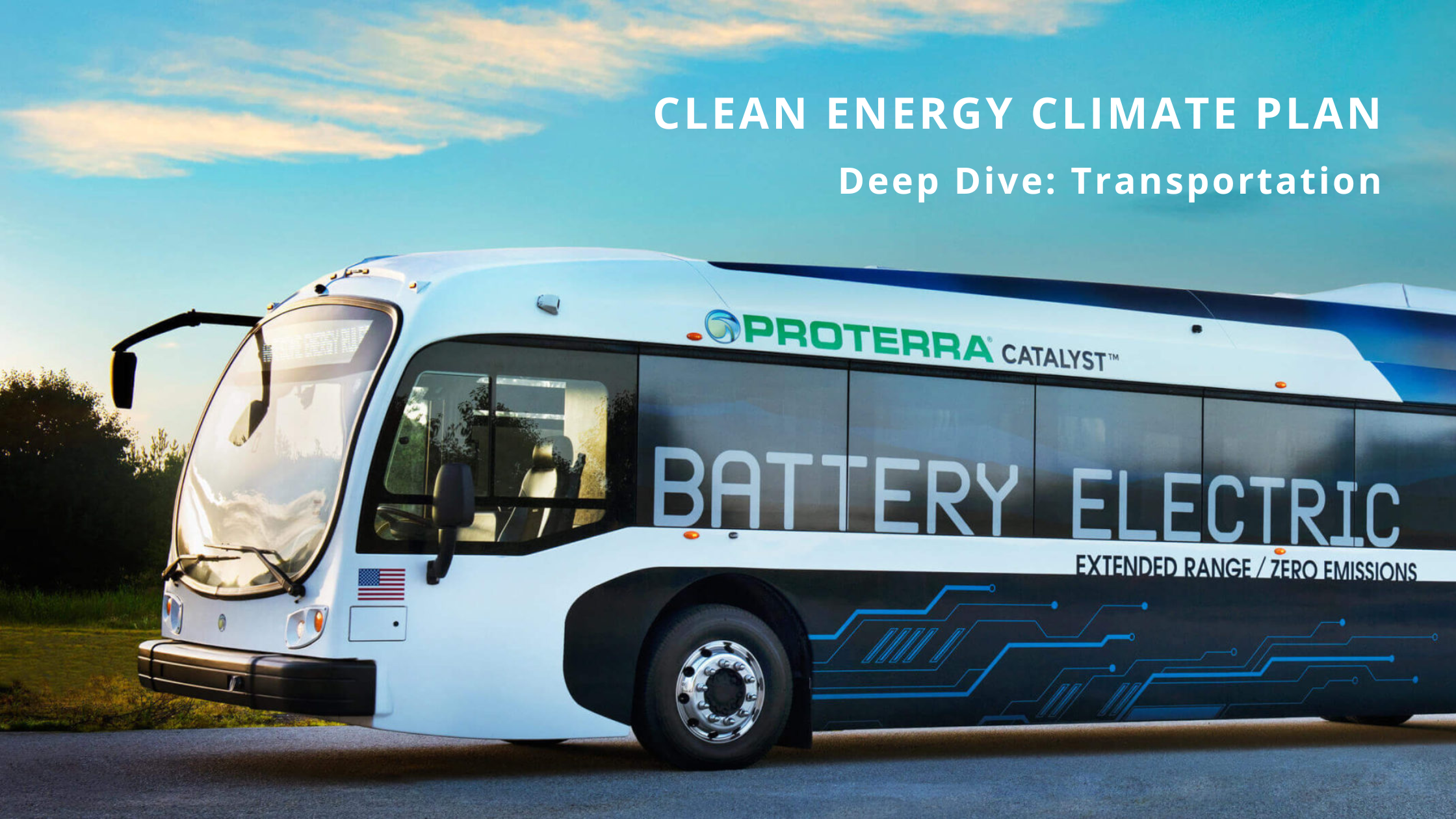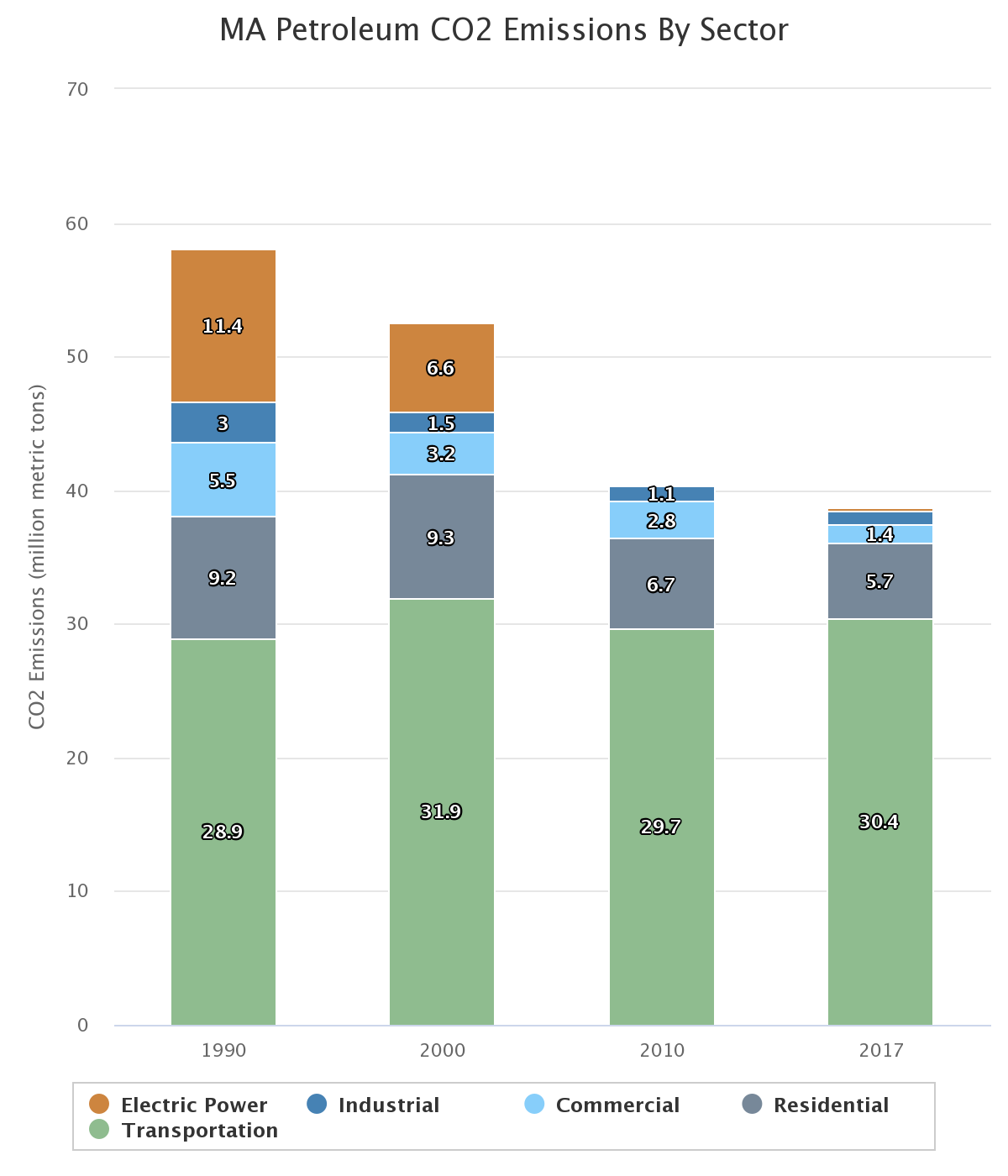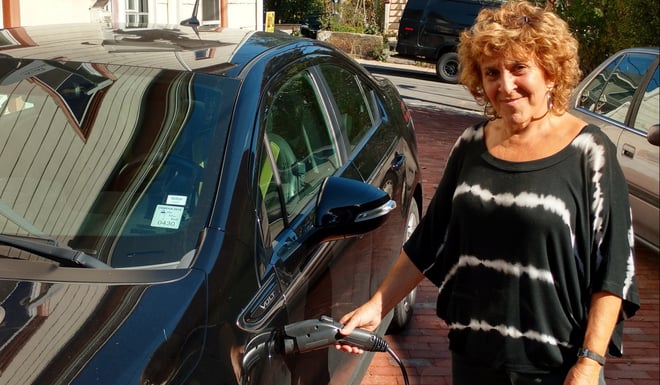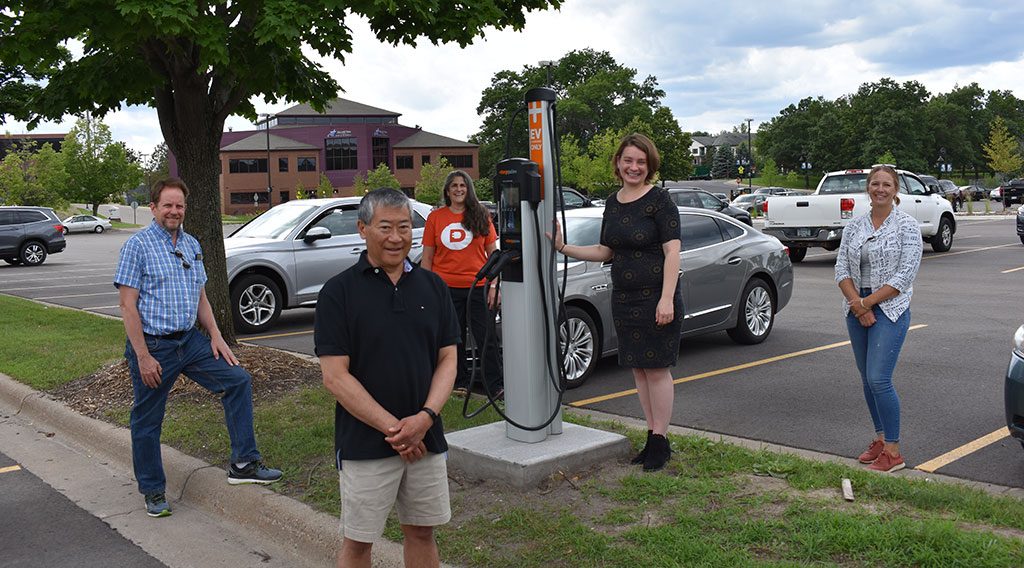Take Action on Massachusetts’ 2050 Climate Plan
Once again, Massachusetts is working on a clean energy and climate plan – this time for 2050 – and your input is...

This blog covers strategies outlined in Massachusetts’ final Clean Energy and Climate Plan (CECP) to reduce greenhouse gas (GHG) emissions in the transportation sector. For more background on the CECP for 2025 and 2030, read this blog.
Transportation is the largest source of GHG emissions in Massachusetts and the state’s ability to meet its 2025 and 2030 GHG requirements will hinge largely on this sector. The final CECP requires reductions in the transportation sector of 18% by 2025 and 34% by 2030. In 2020, with all the reduced travel due to the pandemic, we reached 22% reductions under 1990 levels. But otherwise, transportation emissions have remained stubborn, as the green bar in the graph below demonstrates.

Massachusetts Greenhouse Gas Emissions by Sector, from Mass.gov
Back when the first draft of the CECP was published in late 2020, Green Energy Consumers submitted official comments, which focused heavily on transportation. At that time, we called for more specificity in the outlined strategies, plus a greater emphasis on providing alternatives to single-occupancy passenger vehicles and on the reduction of vehicle miles traveled (VMT) (among many other things that we summarized on our blog). The Massachusetts Executive Office of Environmental Affairs (EEA) heard us and other advocates on some of those points, but not necessarily all of them.
 Briefly summarized, this final version of the CECP outlines a two-pronged approach to reducing transportation emissions: simultaneously reducing the amount of miles vehicles travel overall and rapidly electrifying vehicles of all types and sizes. Specifically, the CECP calls for 200,000 EVs by 2025 and 900,000 by 2030 (out of the 5.5 million passenger vehicles currently on our roads).
Briefly summarized, this final version of the CECP outlines a two-pronged approach to reducing transportation emissions: simultaneously reducing the amount of miles vehicles travel overall and rapidly electrifying vehicles of all types and sizes. Specifically, the CECP calls for 200,000 EVs by 2025 and 900,000 by 2030 (out of the 5.5 million passenger vehicles currently on our roads).
The CECP lists six strategies to realize these goals, and we've included them in this blog along with our thoughts on each.
The main pathways outlined in this strategy are multifamily zoning, the MBTA bus modernization plan, MassDOT Complete Streets and Shared Streets Programs, coordination with employers, and e-bike incentive programs. Despite the fact that these are all great things that the state should be doing (and that the last CECP did not discuss), all of these were already in the works anyway. They’re not additional, and they’re still not adequately funded.
Vehicle efficiency can only be regulated by the federal government, with one exception: California can issue stricter standards (or "advanced" standards) thanks to a waiver in the Clean Air Act. Other states can use California's standards too. The CECP's strategy depends on MA adopting two such standards: Advanced Clean Cars II and Advanced Clean Trucks regulations. We fully support this.
We are eagerly awaiting ACCII regulations to come out of California later this year, which are expected to lead to 100% of new car sales being electric by 2035.
Read more about Advanced Clean Trucks here.
This section sums up our own views on EV incentives pretty well: rebates and other incentives will be needed until EVs reach cost-parity with gas-powered cars. For this decade, EV incentives should strive to accelerate EV adoption generally, and then transition to a more targeted program once we hit cost parity (an example might be offering rebates only to low- and moderate-income drivers).
We fully support prioritizing the electrification of fleet vehicles, such as school buses, ride-hailing services, small business fleets, and more, which tend to drive more miles than passenger vehicles and contribute disproportionately to air pollution and public health harm. However, this section in the CECP was scant in detail! As advocates, we will need to call for more details on programs that this section relies on.
We know the lack of charging is a major barrier to accelerating EV adoption. In this section, the state commits to building DC Fast Charging along highways and through competitive grants, in addition to updating building codes and supporting residential smart charging.
Specifically, the state sets the targets of having 15,000 public charging stations by 2025 and 75,000 by 2030. How exactly we’re going to build that many is not specified. Right now, the Department of Public Utilities (DPU) is reviewing proposals from our major electric utilities and will shortly issue its order on those EV dockets. Historically, the DPU hasn’t had to consider climate change in its deliberations, but thanks to the 2021 Climate Roadmap bill, that’s now part of its purview. We hope they will come out with strong programs to support charging build-out.
From our perspective here at Green Energy Consumers running the Drive Green program, we know that educating consumers and dealerships as we transition to electric cars is important. We appreciate the CECP's inclusion of strategies for technical support, consumer outreach, workforce development, and pilot programs. This will play a crucial role this decade.
Finally, one addition we were particularly interested to see in this final CECP is projections around workforce impacts. The installation of EV charging units was one of the largest sources of projected new jobs, responsible for 5,900 of the anticipated 22,000 new jobs by 2030!

You can soon read more about our thoughts on the CECP's strategies for reducing emissions in the buildings sector and the electric sector. We are also holding a webinar on July 19th to cover the CECP in detail. We hope to see you there!
P.S. The CECP comes out just as the conference committee in Massachusetts is working on the final version of a 2022 climate bill. This bill reinforces and complements many of the elements in the CECP. Please take a moment to reach out to your legislator to call for a strong climate bill! We have a page with instructions here.
Once again, Massachusetts is working on a clean energy and climate plan – this time for 2050 – and your input is...
On June 30, 2022, the Massachusetts Executive Office of Energy and Environmental Affairs (EEA) released the final...
Comments